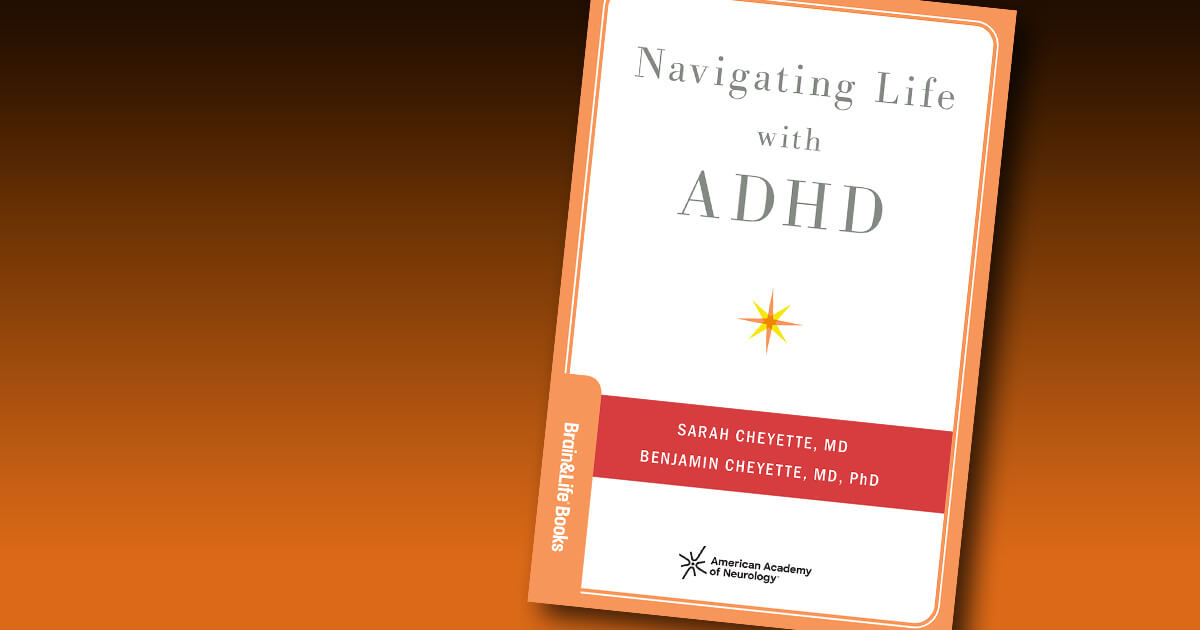Misinformation about attention deficit/hyperactivity disorder (ADHD) has been rampant since the American Psychiatric Association formally recognized the condition in the late 1960s. Among the myths: ADHD was unique to young boys, possibly exacerbated by bad parenting or laziness. Children could outgrow it. It wasn’t “real,” and those diagnosed with the condition and their caretakers were just trying to secure prescription drugs.
Experts attest that none of that is true.
Sarah Cheyette, MD, a pediatric neurologist in private practice who treats children and adults, and Benjamin Cheyette, MD, PhD, a psychiatrist and director of the ADHD program at Mindful Health Solutions, set the record straight in their new book, Navigating Life with ADHD, part of the Brain & Life book series. Published in August and aimed at patients, caregivers, and clinicians, their guide touches on the neurobiological and environmental factors that contribute to ADHD; ways the disorder manifests in patients; and treatments, including pharmacological aids and behavioral changes. The writing is conversational, not scientific, and often includes patient vignettes.
This is the couple’s second book collaboration, following 2016’s ADHD & The Focused Mind (Square One Press), written with Peter Johnson. Their new book’s release comes as the number of children and adults diagnosed with ADHD is “exploding,” Sarah says. “I don’t think there’s another word for it.”
In 2024, researchers with the Centers for Disease Control and Prevention called juvenile ADHD “an ongoing and expanding health concern,” with an estimated 7.1 million children ages 3 to 17 diagnosed with ADHD. That’s an increase of 1 million cases since 2016.
The number of adults with diagnosed ADHD also keeps growing, from 4.5 percent to 6 percent—a total of approximately 15.5 million American adults as of 2023.
Learn more: What Neurologists Are Learning from Treating Adults with ADHD
A 2024 survey commissioned by The Ohio State University Wexner Medical Center and College of Medicine found that 1 in 4 respondents thought they might have ADHD. Many experts believe the rising number of cases can be attributed in part to better diagnostic practices, less stigma, and a deeper understanding of the disorder’s potential biological and environmental causes.
The California-based Cheyettes have studied ADHD for more than 20 years. Sarah’s medical practice originally focused on children with headaches. For many, she found that ADHD was at the root of their head pain.
“ADHD was causing so much stress and disruption in their lives that treating their ADHD actually helped their headaches,” she says. “ADHD is a big component of anxiety, depression, and other psychiatric issues that traditionally were considered separate from ADHD.”
ADHD manifests in different ways. Some patients are deemed hyperactive, and others inattentive. This can vary with a patient’s age, too. “You might be the little boy who can’t sit still who is constantly interrupting the teacher and causing mayhem in the classroom who, as an adult, doesn’t have a problem with hyperactivity,” Benjamin says. “Maybe you tap your foot at meetings or fidget and get up once in a while, but it doesn’t interfere with your life. But now you as an adult can’t pay attention to what your wife is saying, or you can’t get your taxes done on time.”
It’s unknown exactly what causes ADHD, but the Cheyettes believe a combination of genetic and environmental factors are at play. “It’s clearly neurological,” Sarah says.
One model suggests ADHD is a conflict between the brain’s default mode network (most active during daydreaming or meditating) and its central executive network (involved in paying attention). “Think about those two networks competing for brain space,” Benjamin says. “Somebody with ADHD may have a problem switching between networks … and that creates a problem with focus.”
Another theory suggests that defects along the brain’s dopamine reward pathway cause ADHD. Core medications for ADHD, including Ritalin (methylphenidate) and Adderall (a combination of amphetamine and dextroamphetamine), work by increasing levels of dopamine, a neurotransmitter the body releases when an individual feels pleasure and motivation.
“People with ADHD have trouble focusing on long-term rewards at the expense of short-term rewards,” Benjamin says. “They’re constantly chasing the latest thing that crosses their attention, as opposed to staying focused on a long-term goal.”
Environmental factors contributing to ADHD include modern digital media habits. A study of teen media habits published in JAMA in 2018 found that 15 and 16 year olds who most frequently engaged in social media also were most likely to show symptoms of ADHD. A Pew Research Survey that same year found that 15 percent of adults lost focus at work and 8 percent of teens struggled to pay attention in school because of their cell phone use. Benjamin has seen patients who spend all day watching brief videos and then say they have trouble focusing.
“Social media and other forms of passive, short digital entertainment degrade people’s ability to pay attention when used too much over time,” he says, adding, “If you don’t do anything or make any effort to build up your attention span … and instead spend all your time watching short influencer videos, it’s no wonder you don’t develop an attention span that you can use when you actually need it.”
Someone with ADHD can’t be blamed for their diagnosis, but that doesn’t stop many from calling themselves lazy or unintelligent. To combat that, Sarah suggests children get three good pieces of feedback for every negative or corrective feedback.
“It’s important that those kids and adults learn that there is biology behind their behavior,” she says. “It makes them feel like, ‘Wait a second. I’m not a bad person or a bad human. I’m a product of my biology,’ and biology can be modified or improved.”
Read More
For more information about the Brain & Life book series, including the new ADHD book and the recently released Navigating Life with Multiple Sclerosis, second edition, visit Brain & Life books. Books are available for purchase through Amazon.
